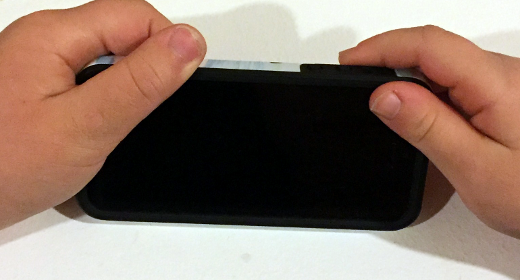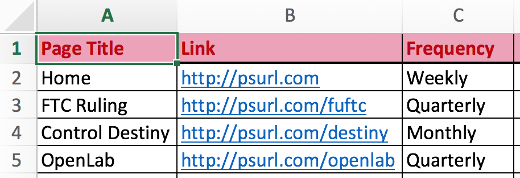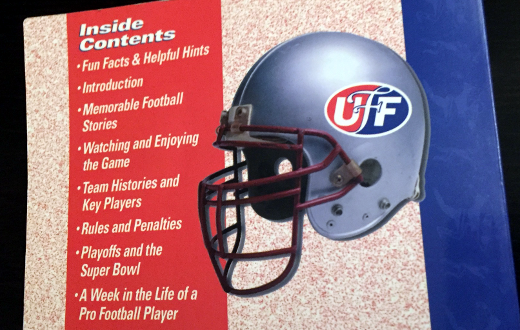7 Tips For Giving Your Younger Kids An Old iPhone

A common situation in my household and others is when parents upgrade their mobile phones they then give the old one to their kids. With more and more apps tailored to kids, their desire to take pictures as well as shorter device upgrade cycles, it is a logical scenario. Not to mention kids know how to use them better than most adults and, frankly, they make for the occasional babysitter, but I digress.
As good as they are, and as much as they can be used for educational purposes, simply handing over your old device without restrictions when you get a new one is not the best approach.
For the iPhone and Beyond
Here I will be specifically talking about the Apple iPhone, as it is what I use and know best. Where some or all of these tips may apply to other mobile devices, such as an Android, I don’t know them as well, so I will only vouch for what I know and lessons I have learned.
Where there are some features for managing the use of them by the kids, and apps are continuously coming onto the market to address this, there is already some features and settings out of the box built-into iOS – the iPhone’s operating system – you can leverage, along with good old-fashioned common sense.
As someone who first did this years ago, and has learned a few things along the way, I’d like to share with you some tips I learned – some the hard way – for giving a kid an iPhone. Note many these apply to whether or not the iPhone you give has a SIM card in it or not, and I indicate which ones apply to specifically to having one or not.
1. Wipe It Clean – Once you have activated your new iPhone, synced all of your photos, contacts, calendar, music, apps, etc. to the new device and did one final backup of it, have your kid start with a “fresh” iPhone by wiping it clean, or doing a hard reset. This article from Lifewire takes you through doing a hard reset on various versions of the iPhone. This way, your kid will not see any of your old information, apps, texts, notes, email… or something you may have forgotten was on it.
2. Use Your Own Apple Account – By using your own apple account for the kid’s iPhone, they won’t be able to install any apps on their own, and it will require you to enter your own password to have any added to the device. Any photos they take will also appear in your Photo Stream, as another way of monitoring their activity. And when you enter your password, make sure nobody else sees it!
3. Use a unique passcode, different from your own – Their iPhone should be locked with a passcode… just like yours is, right? You should know their passcode, and tell them not to change it (they will likely find where to do so), and if they do and don’t tell you what it is, you will have no choice but to wipe it clean again.
4. Turn Off Cellular Data For Apps – Streaming Pandora and watching all of the Angry Birds app videos is certainly fun, and can add up if they are eating at cellular data. If your device has a live SIM card in it, make sure to turn off the settings to use cellular data, which will force them to use WiFi for such app features. Even with recently launched “unlimited” data plans, the more data you use, the slower the connection can be.
5. Turn Off Notifications In Apps – It’s one thing if they use the iPhone, it’s another if it keeps beeping and vibrating for whatever random notifications. Turn off these notifications so they have less reasons to keep it in their hands… any more than they are now. Where you can do it for already installed apps through the Settings, you can also be with them when they first launch a new app, and when prompted to show notifications, you can always decline them.
6. Do not give them a charger – If they don’t have a charger and need their iPhone recharged, they need to give it to you. Granted many households have chargers everywhere (mine included) but one place should not be in their possession. Most likely the battery on your older iPhone is not too strong and draining quickly, so it this adds an additional control mechanism on the device.
7. Do not “give” the iPhone – You’re probably reading this and saying, Mike, so far you have been talking about giving them a device, now you’re saying not to? What the… Ok, ok, let me explain! The kiddos can use the device – customize the icon locations and wallpapers, get a case for it… but it is still your iPhone and their use of it is a privilege! A privilege can be revoked if abused or as a consequence of not getting out of bed in the morning or whatever other challenge you have with them as a parent.
Take a few steps before you simply hand over the old iPhone, and you’ll be glad you did.
Demystifying Giving Your Kid An iPhone
Parents are faced today with challenges they themselves and their parents didn’t have to deal with, one being mobile technology. Where it is impossible to watch the kids constantly and how they use the devices, taking some preventative steps will go a long way to instilling responsibility in using the technology.
This is from The Hot Iron, a journal on business and technology by Mike Maddaloni.
Did you enjoy this? Subscribe to The Hot Iron by RSS/XML feed or Read by Email.
Mobile Technology • Strategize • Technology • Thrive • (0) Comments • Permalink
The Simplest Web Site Content Plan

Quick – how accurate is your Web site?
My deepest apologies if I caused you to have anything from a puzzled look on your face to a panic attack. But if you own a Web site and have any sizable amount of content, it should be periodically reviewed to see if it needs to be updated.
Where there are tools available to help this – perhaps within your content management system (CMS) where you update your content, or external, third-party tools, I’d like to share a basic, straightforward and low-tech way to remind you to review your content.
From Louisville With Love
In a past role I managed the technical environment for our Web site and Intranet, working with staff from Marketing together as the Web team. One day someone from the facilities department stopped by my desk, and the brief conversation we had went something like this:
Julie (not their real name): “Hey, Mike.”
Me: “Hey, Julie”
Julie: “You know the Louisville, Kentucky office moved, right?”
Me: “Yea, I saw that someplace… why are you asking me?”
Julie: “Because the old office address is still on the Web site – you do something with that, right?”
After that thrilling conversation, I got on the phone with my marketing counterpart (we’ll call her Natasha) and has basically the same conversation with her, however I said Julie’s lines. This was followed by a few choice adult words by both of us, then Natasha proceeded to make the change to the Web site.
Maintaining With a Plan
Still on the phone, we both could hear each other exhale. We were glad we were able to make the change quickly, then the conversation continued around how much other outdated content was out there, updating it, and a plan to do both of these tasks moving forward.
As with many Web sites out there, content has many owners. The marketing teams for each product managed their own content, and Natasha was responsible for the overall “corporate” content. We didn’t have a feature-rich CMS for the site that could alert us to “expired” or “expiring” content, nor were there many decent comprehensive content tools at the market at the time – and we looked – so we had to come up with our own solution.
What we came up with was straightforward yet highly effective, and it came about with these steps.
1. First I listed all pages of the Web site and put it into a spreadsheet. As we had a Sitemap page it made this task easy.
2. Natasha then took the spreadsheet and added a column called “frequency” and proceeded to make the frequency of how often page content should be reviewed (e.g. weekly, monthly, quarterly).
3. I took a look at her revised spreadsheet and made suggestions regarding the frequency – remember, I am much, much more than just a technologist!
4. Natasha, using the final spreadsheet as a guide, created calendar alerts with links to the pages as reminders to review the content.
That was it, and it worked.
Of course some content would be reviewed more frequently, namely when it was modified or other business triggers occurred. The point of the above exercise though was to ensure that, on a regular basis, all of the Web site content would be reviewed for accuracy. In addition to this, I would perform regular link checks to ensure the content was technically connected.
What Works For You?
As you are reading this, I hope you are thinking of the content of your Web site, as there is no time like the present to be thinking about it! In addition to the site itself, your extended Web presence includes your social media profiles and feeds. As it’s easy to tweak one or more and forget about the others, perhaps this “detached” solution of using your calendar will work for you too?
Deconstructing a Web Content Plan
In this hyper-speed world of content development, it’s not unusual to have inaccurate or incomplete content out there, exposed, for all to see. By coming up with a straightforward and highly usable plan, you will be able to get ahead of long-standing errors and omissions in your Web presence.
This is from The Hot Iron, a journal on business and technology by Mike Maddaloni.
Did you enjoy this? Subscribe to The Hot Iron by RSS/XML feed or Read by Email.
Blogging • Business • Strategize • Web Design • (1) Comments • Permalink
My Takeaways From The Ultimate Female Fan Guide to Pro Football
The Super Bowl is a game you prepare for mentally, physically or both – depending on your level of fandom, and what you are watching it for. It is unique among sports as even non-fans watch, for the commercials, because they are at parties, for curiosity sake, et. al.
If you are a football fan, you realize the complexity of the rules of the game – realize in that you understand them all, none of them, or as many are, somewhere in between. How much you may know is most likely influenced by if you played football, was taught by a parent or someone else close to you or you learned on your own… he latter being the case for myself. Football for me wasn’t my first love of sports, but has become it. I grew up a baseball fan, which came from my Mom’s love of the Boston Red Sox. While I was growing up, the New England Patriots were horrible, and the bottom rung of the sports ladder in New England, way behind the Sox, Boston Celtics and Boston Bruins.
So when I decided on a whim to get season tickets for the Patriots back in the early 90’s, before they became the multiple Super Bowl winning team they are now, where I had some knowledge of the game, I had much to learn. As I was in my mid-20’s at that time, I was a little embarrassed that I didn’t know more of the game, and sought out a way to learn it. I found a book that not only helped me then, but over 20 years later as well.
I found the book The Ultimate Female Fan Guide to Pro Football at the Patriots Pro Shop, which was adjacent to the team’s former home field, Foxboro Stadium. Flipping through it, I realized it was exactly what I needed to learn the game. Two decades later I found it among some things, and I dusted it off and re-read it. My takeaways, as follow, come from my recollection of my initial read as well as this recent unearthing of it.
Structured Learning Is Sometimes Better Than On-The-Task Learning – As most of my training and learning over my career has been on-the-job or just-in-time and supplemented by some training, depending on the topic structured learning is the better way, as it was for me with football. Simply sitting down and watching 60 minutes of plays over 3 hours may not even cover everything, and taking a methodical approach supplemented with watching the game helped me learn it well.
Anecdotal Information Provides Greater Context To Formal Knowledge – Learning the formal rules of football, like any other topic, is important to learning about what you are watching. But for a game like football which has evolved over close to 100 years, having familiarity of the evolution and events which led to where the game is today is great to the deep understanding of the game. Betsy Berns mixes helpful hints and fun facts throughout the pages of The Ultimate Female Fan Guide to Pro Football, all of which provide greater context to the main information presented.
What Taught Me Helps Teach Others - When I found the book, I wanted to go through it again as I am teaching my daughter the rules of football. As I am writing this I am sitting down with her and we are going through it together, and I am helping her understand both the rules for and my love for the game, which I hope will lead to her own appreciation and affection for it too.
As my copy of The Ultimate Female Fan Guide to Pro Football came out over 20 years ago, what I have is now out of print and is now known simply as The Female Fan Guide to Pro Football by the same author. Where I haven’t read the newer version specifically, I can only imagine it is better (not to mention more up to date) than my version. I recommend it to any fan of any reading age – and gender – as a great way to learn this great game.
This is from The Hot Iron, a journal on business and technology by Mike Maddaloni.
Did you enjoy this? Subscribe to The Hot Iron by RSS/XML feed or Read by Email.
Book Take-Aways • Strategize • Thrive • (0) Comments • Permalink
7 Lessons Learned From Blogging For 10 Years

On Saturday, December 30, 2006 at 1:56 pm Central US Time, I published my very first blog post here at The Hot Iron. If you didn’t click on the link to read it, it would have taken longer to read this sentence than to read that post. Now ten years and 822 posts later, I am entering my second decade of blogging.
Where every year on my “blogversary” I have written a post to acknowledge it (some more robust than others), rather than simply patting myself on the back again, I’d like to share some of the lessons I have learned over the years of writing.
1. You never know who is reading – Despite knowing the Internet is Earth-wide, I still get amazed as to the reach of what I have written. Whether it’s companies inviting me to dinner or to travel the world, to the one time when someone quoted to me something I wrote myself, the true exposure is something I need to remind myself before I click the publish button each time.
2. Answer a question with a blog post – As the genesis of this blog was out of my former Web consulting firm, I found it useful to use The Hot Iron as not only a means of promoting my business but to create “reusable” content. Whenever someone asked me a question that I believed someone else may ask me, I would create a blog post on it and send them the link in response to their query. It not only answered their question, but made me look smarter as I wrote something on it, and made answering the question the next time all the easier. I still do that to this day.
3. Blogging can help you be a better writer – Before I started blogging, most of my writing was emails and technical specifications and documentation. Over time, I not only honed my writing but found myself greatly enjoying it. Many people have told me that they find it hard to get into a groove on writing, and if you look at my first few posts to those I write today, you will see quite a progression. More on the writing process later.
4. Simply placing ads on your blog won’t make you rich – Some of you may be surprised by this statement, and others of you are surely smirking at it, as you learned this the hard way yourself. From banner ads, Amazon product links to payment services like the former CentUp or soon-to-be former Google Contribute, ads may bring in a little loose change, but it takes a concentrated effort and plan to make real income from your blog.
5. Allow people to subscribe by RSS or email – Many of my most faithful readers are ones who receive my blog posts in their inbox or in their RSS feed reader. Even though Google killed off its Reader product years ago, people still aggregate content by RSS feeds in their Web browser or other services such as Fever. Making it easy for people to read what you write will keep readers reading.
6. Control your blog platform – Over years I have seen people post loyally on a variety of public platforms, from Geocities to Posterous, only to see those services shut down and their content vanish, especially as they never had a backup of their own writing! I am in the business of helping people get their message out on the Web, and I sill profess the best way is to do so is to have control of your Web publishing platform. Your own domain name coupled with any one of the number of content management systems (CMS) out there will give you the ability to manage your message as well as move it if necessary.
7. Blog posts don’t write themselves – Doing the math, I have written and published about 1.5 posts a week. On the surface this looks good, but looking back on early posts – especially those before the social media boom which would have probably been tweets rather than blog posts – there was irregularity and long periods where posts were published and where they were not. It takes a commitment to writing – focusing on actually finishing writing, editing and publishing something. I also like to add original photos to posts, which will take me on a hunt to find the right shot (like the one above at a liquor store – there are worst places to go) and more time. But as I do enjoy writing, it’s also a hunt to find time when I am caffeinated and have thoughts pouring out of my head, as I am as I write this.
Deconstructing Ten Years of Blogging
There are very few things in our lives that we can measure in terms of decades, and I can now count this blog as one of them. For as much work that goes into writing what I share here at The Hot Iron, it is truly something I enjoy doing. This makes the time I have devoted to this labor of love all the more worth it. Feedback from readers rounds out the overall experience, and for that I am also grateful. Now on to post 823.
This is from The Hot Iron, a journal on business and technology by Mike Maddaloni.
Did you enjoy this? Subscribe to The Hot Iron by RSS/XML feed or Read by Email.
Announcements • Blogging • Thrive • (1) Comments • Permalink
7 Lessons Learned From Serving On A Non-Profit Board

As the year winds down, a New Year’s resolution to give back to the community is common on many people’s resolution lists. If you are considering being on the board of directors of a non-profit organization you are in good company, as it is an excellent way to contribute your talents and connections to an organization that is on the frontline of helping others in your community.
Recently I concluded a 2-year term on a non-profit board. My decision to leave was personal and not related to the organization, as I still support them and their great work. This was the first time I was on a board in this form – in the past I served on a board where it also ran the organization, a very different scenario. As a result, there are unique roles you fill.
Allow me to share some lessons learned from my most recent board experience. These hopefully will be helpful for considering being on a non-profit board, and could even be of use for those already on one.
1. Schedule time to perform board work – If you are serving on a board it is most likely not your full-time job. In addition to said job, you may have a life, family, favorite sports team, like to exercise and so on. It is easy to push off time to perform board duties for other duties of life. Unless you are a supreme being and can make time, schedule time for the board activities you have committed to.
2. Get your pitch down – Among the other activities of a board member is to be a spokesperson for the organization. When people ask you what the organization does, you better be ready to respond. Getting your pitch – or elevator speech – down is very important. Perhaps the organization may have one scripted already, and if it does that is a great place to start. But as you get to know the organization better, having a personalized pitch, in your own words, is the best way to sell someone on what they do, and why that person should contribute money to it.
3. Make a plan to fulfill your financial commitment – As much as your talents and time are important to the organization, treasures – namely money – keeps it running. Most board members make a financial commitment to contribute X dollars and raise Y dollars. This is commonly called a give/get, and it is dollar amounts that you should commit to both memory and heart. Where giving may be easy, it also may not be, and for both it is best to come up with a plan or timetable for when and how you will raise the funds to meet this vital commitment.
4. Understand the numbers – The devil is in the details, and for a non-profit board member this is the financials of the organization. Depending on the leadership of the organization, the numbers may be to varying depth and organized in ways that may mean something to the organization, but maybe not to you yourself. If there are accountants or financial people on the board, don’t solely leave the analysis of the financials to them. If you don’t understand them – ask. It could be having a 1-on-1 session with the executive director or perhaps one of those accountants on the board to better understand them. As the vitality of the organization is part of your duty, understanding the numbers and what they tell will help you know if they are on the right path or not.
5. You will learn many things as you go that you didn't expect – “Gee, I didn’t realize that” was a statement I used a lot during my Board term. A non-profit organization, no matter the size, will have many nuances, just like people do. Even great organizations who have a board-member orientation may not cover everything. Perhaps it is the depth of the history of the organization that is not fully documented, or perhaps several employees quit just after you joined the board and you may be involved in hiring them. Just like people, there are a lot layers to a lot of things, and hopefully what you discover is more positive than negative.
6. Get to know all board members – A board of directors can be a handful of people to close to 2 dozen. Each of these board members brings something to the table making them unique, and where you will know that on the periphery, as with most aspects of business, it’s good to know the person behind the board seat. To what depth you get to know other board members will likely vary based on the person – some you will get to know better than others. It’s always good to do the basic connecting – LinkedIn, other social media – and like any other networking, find areas in common or of interest to have conversations.
7. You are not there to make friends, but you just may – Where it’s good to know other board members, or the staff and other people involved with the organization, it’s not a good idea to go in assuming you will be true friends with everyone. Friendships are much deeper than that, and your role on the board may not even be appropriate for friendships with others. If you do, bonus!
Deconstructing Board Service
Being on a non-profit board of directors can be a satisfying and rewarding experience, one which should be a win-win situation between you and the organization. To achieve this takes a level of commitment and understanding, of yourself, the organization and what can be possible. Like any experience, try, evaluate, and work toward your goals. And hopefully have some fun along the way.
This is from The Hot Iron, a journal on business and technology by Mike Maddaloni.
Did you enjoy this? Subscribe to The Hot Iron by RSS/XML feed or Read by Email.
(0) Comments • Permalink




